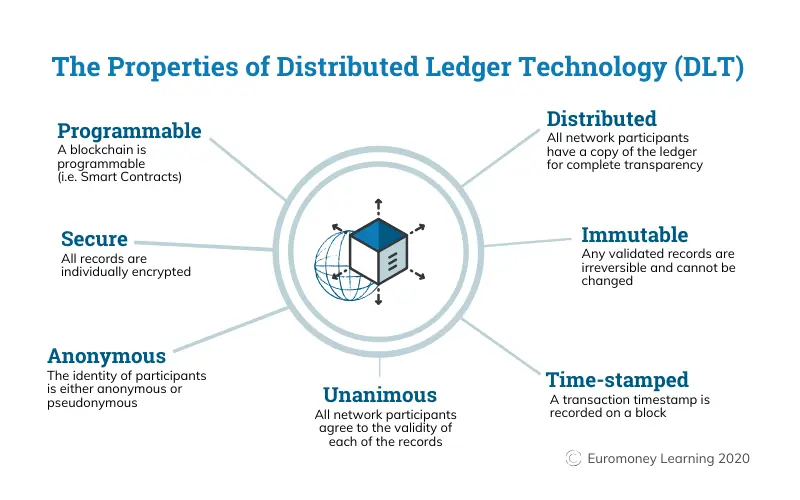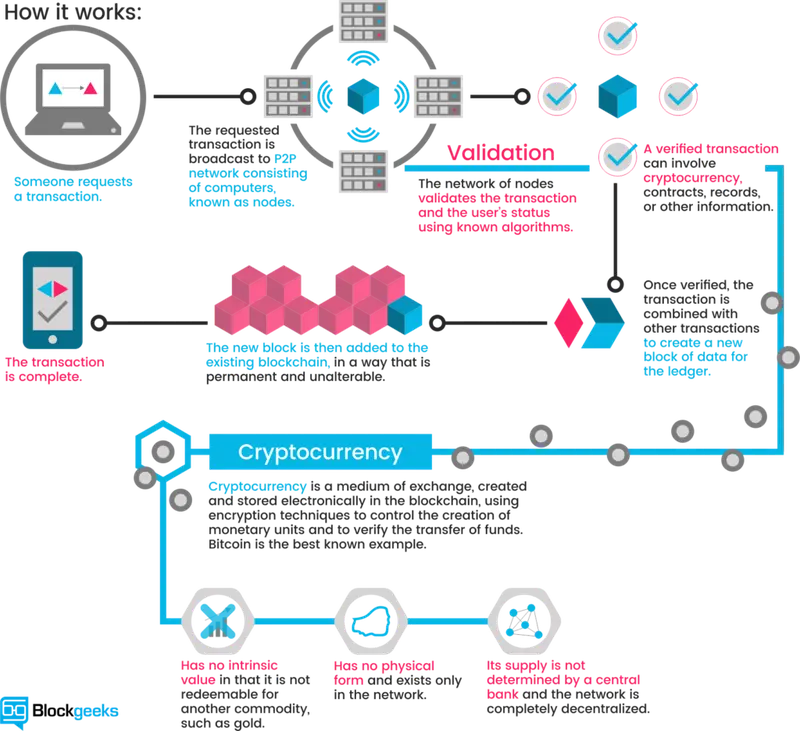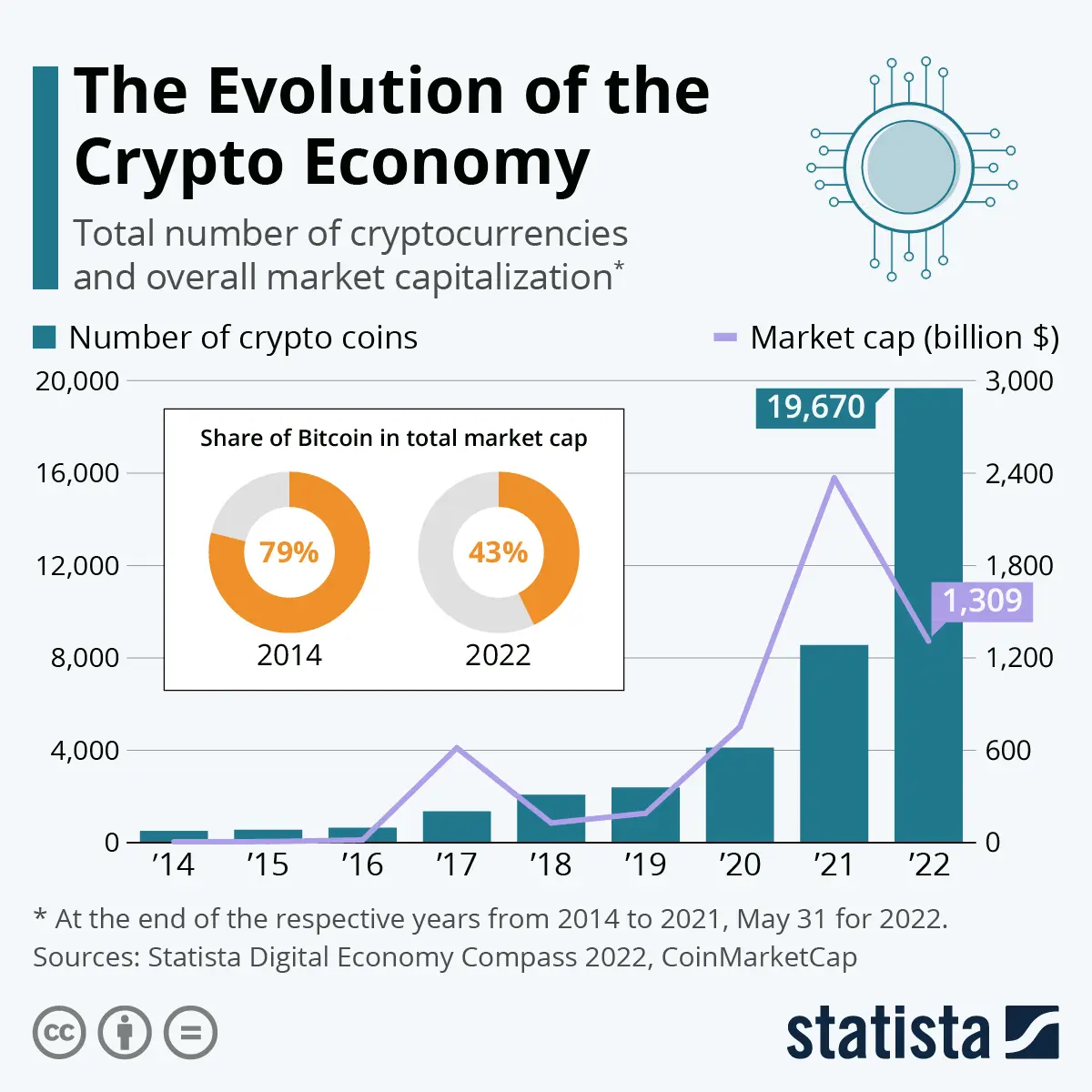A new wave - what made Blockchain Technology and Cryptocurrency so different?
This subject might seem simple and straightforward, and everyone is talking about it these days but most don’t really know substantive details. Read on and you might be a hit at the Christmas dinner party. Blockchain technology and cryptocurrency are two terms that have changed the course of history, created new possibilities, and paved an alternative path for a better future. This has once again demonstrated the innovative and creative power of the human mind in finding better solutions.
Being "up to date" in 2021 cannot be said to be complete without understanding these two terms; what they mean, how they function, their impact, and potential - as they currently sit in the spotlight of major sectors. Blockchain and cryptocurrencies are two important pivot points in global finance, with a sizable impact on various economic sectors and for a modern person, they are a must to start observing, studying and embracing.
Blockchain and cryptocurrencies are often used synonymously, but do they mean the same thing? We'll find out, as we shed light on both topics to gain a better understanding.
What Is Blockchain?
Picture blockchain as an accountant's book for recording transactions, but instead of the accountant being the sole owner with control and access to the book, control and access is spread to different accountants in the same association all over the world, each verifying one another.
Blockchain is an open database that is distributed among members of a network (computer systems or nodes). It is a transparent digital ledger that keeps records of transactions while simultaneously spreading the data to all members and ensuring security, using cryptography.

Traditional accounting records in rows and columns, and can only span the capacity of a logbook. Blockchain transactions are recorded in blocks, and just like the capacity of a book can be exhausted; the capacity of a block can also be exhausted - after which it is sealed and a new block is created and added to the previous block, forming a long chain of blocks.
Each block has its unique digital signature, which makes it difficult, and if properly done, impossible to alter after sealing. The longer the chain of blocks, the more secure it is.
Blockchain technology became popular with the bitcoin blockchain, so it's easy to conclude it can only be used for recording transactions, though that can’t be further from the truth. Blockchain technology can be used for a multitude of other purposes for instance storage or secure hashing for any type of data.
According to multiple experts, blockchain technology and the internet can sit at the same table in terms of disruptiveness. Although the concept of blockchain had first been formed 28 years earlier, it didn't become more widely known until 2008 - when a white paper was published by Satoshi Nakomoto explaining the concept of electronic cash called Bitcoin.

What Are Cryptocurrencies?
Cryptocurrencies were born out of strong defiance to cumbersome processes, arcane or flawed laws, lies, corruption, and irregularities that have characterized the traditional banking system for too long. They are in essence a successful attempt to correct these disappointments and allow people to self-govern their money.
Cryptocurrency is like the money you carry in your physical wallet, only that it is virtual and requires a digital wallet. It is digital money that can be converted into any local currency and affords you the same buying and selling attributes. Cryptocurrencies are currencies that use cryptography to keep them safe, hence the name.
Cryptocurrencies are platforms for transactions or exchanging value that allows one to bypass the involvement of a central agency or financial institution (such as a bank). Sending money to your friend requires multiple communications, and verifications via legacy systems between your bank, the receiving bank, sometimes intermediary banks, and other related bodies before funds even exit your account. Crypto eliminates the need for this with its own technology, blockchain.
Bitcoin runs on blockchain technology to enable transactions between people anywhere in the world (and there are even satellites running a node these days, so technically outer space), record the transaction on an open database (blockchain), and ensure security using cryptography. It is a much faster, cheaper, and safer way to transact and store value.
Cryptocurrency takes away the monopoly of government central banks, as well as commercial banks, and gives control to everyone on the network. Miners are an integral part of the cryptocurrency ecosystem. In a proof of work (PoW) system, they are responsible for creating new digital currencies (blocks) while validating transactions within the network.
There are currently over 14,000 different cryptocurrencies in existence today. Bitcoin and Ethereum are the most popular, and have the largest market capitalization, with Bitcoin being the largest of all with 41.5% market dominance.
How Does Blockchain and Cryptocurrency Work?
Understanding how blockchain works requires a simple understanding of its components. To cover the basics, there are three important terms related to blockchain - they are: blocks, mining, and computer systems (nodes).
- Blocks: The foundation and body of any chain - every block is comprised of three things: data, nonce (32-bit integer), and a hash (256-bit integer).
The Process: When any block is created, the 32-bit integer (nonce) produces a 256-bit integer (hash) that serves as a digital seal or signature for the block - making it inaccessible or unalterable.
- Mining: Every activity or procedure involves creating and adding a new block to the chain, and those who perform the activity are called miners.
Mining a block involves pinpointing the right nonce that produces a particular hash or one similar to it. This employs the use of specialized chips (ASIC or GPU typically) to solve herculean computational puzzles (hence PoW).
For a block mined to be successful, it has to be agreed to by every system on the network. Mining also comes with rewards (for Bitcoin, a set number of bitcoins are given to the miners for their work).
- Computer Systems: One of the "special things" about the blockchain technology is the elimination of external influence on data control, access, and verification, and elimination of any single point of failure. This is broadly termed decentralization.
Blockchain achieves this by distributing its database to a number of systems connected to the network. Every system on the network holds a copy of the blockchain, and because of its transparency, what system 1 can see, system 10,000 can also see.
For any change to happen on the blockchain, it has to be agreed upon by most systems on the network.
Having blockchain explained and understanding how the blockchain works, makes understanding how cryptocurrency works much easier; since blockchain is at the heart of cryptocurrency structure.
Cryptocurrencies are an alternate form of making payments that use blockchain technology to secure and keep a public account of every transaction. Say you purchase an item with Bitcoin, the blockchain processes your transfer, records it in its transparent database, and secures it with cryptographic means. All this happens in minutes or sometimes seconds, startling compared to the speed of traditional banks, with much-improved security, and substantially cheaper transaction costs.
How Did They Start?
Blockchain technology first appeared in 1991 research by two visionary scientists; W. Scott Stornetta and Stuart Haber. Their goal was to solve the problem of alterable timestamps for digitized documents.
They created a system that uses a string of blocks, rigidly encoded with cryptography to protect the documents and their timestamps. This system is what we know as a chain of cryptographic blocks or blockchain. Further developments were dormant since then until the concepts were finally applied in 2008.
There have been other attempts at digital money before Bitcoin, but the Bitcoin blockchain is the first and most successful digital currency. The idea of Bitcoin first surfaced on a white paper in 2008 by Satoshi Nakamoto, where he explained and proposed his idea of an electronic cash that will run on a decentralized system using blockchain.
Much of Bitcoin's success is attributed to the effective use of the upgraded blockchain technology Satoshi infused.
What Makes Blockchain And Cryptocurrency Different?
There are several reasons that have bolstered the popularity and acceptance of the duo over the past years, at the centre of which is the interoperability of systems, transparency, speed and defiance that they bring to the mainstream.
- Security: Transactions have never been more secure in history than they are today with the blockchain technology. Blockchain transactions are well protected with cryptography, a form of information security that prioritizes integrity, authentication, confidentiality, and non-repudiation.
- Transparency and Integrity: This is one of the major stimuli for blockchain and cryptocurrencies wide acceptance and adoption rate. Blockchain is an open database that publicly keeps records of every transaction conducted between any parties within a network. This allows circumvention of high fees, ineffective operations and high barriers to entry of existing financial structures.
- Speed and Effectiveness: Humans don't like stress and have a continuously reducing patience span. Thus, anything that saves time, while still being effective, quickly garners acceptance among individuals and even corporate players.
- Eliminates third parties: Cryptocurrency eliminates the need for central banks (for currency creation) and banks (for value exchange and transaction verification). Its blockchain technology creates a self-sufficient system that enables its creation, distribution, and transaction verifications. The elimination of such parties saves money and time, as people can now transact with one another directly.
There is a myriad of reasons that make blockchain and cryptocurrency special, but the chief ones are providing a better, faster, safer, and cheaper way of doing things.
What Can They Be Used For?
The core of Bitcoin's creation was to serve as an alternate medium for exchange. Bitcoin's blockchain and other cryptocurrencies have gradually grown from being used in small purchases of everyday items, to larger purchases of buildings, cars, etc. Cryptocurrency can be used for buying and selling, so far as both parties involved accept it.
Blockchain might have started with cryptocurrency, but is not limited to cryptocurrency. Bitcoin makes use of the technology for accounting, but at its core, it is a database. Therefore, blockchain technology can be used to store and secure a variety of information across any sector or field.
Different fields have started exploring and implementing blockchain technology in their workflows. Some current applications of blockchain in the world today are in:
- Supply chain management
- Land ownership and management
- Renewable energy
- e-Voting
- Remittances
- Development aid
- Digital identification
- Agriculture
- Healthcare
- Weather forecast
- Manufacturing Industries
- Cybersecurity
- Environmental tracking, amongst others.
Blockchain and its potential is still under much development in different fields and sectors, but its adoption is very certain looking at global trends and monetary policy decisions of G7.
Blockchain Cryptocurrency
The term "blockchain cryptocurrency" stems from the fact that Bitcoin popularized the blockchain technology. For the longest time, blockchain was only seen as a ledger for recording transactions, though now it is much more than that.
Blockchain cryptocurrency is probably one of the most impactful inventions in the last decade. The duo has challenged the status quo and is allowing individuals and corporates alike a better way of handling financial transactions. The blockchain cryptocurrency is an alternate way of buying and selling, sending and receiving funds that bypasses a lot of unnecessary bills and regulations.

Blockchain cryptocurrency focuses on secure transactions that also secure privacy. It focuses on creating a financial system that is open 24/7. It addresses the banking of the unbanked, making it easy for the financially excluded population to have a say in their financial situation as easy as using the internet.
What The Future Holds For Blockchain And Cryptocurrency
Blockchain and cryptocurrency have grown exponentially from where they started. They've recorded many feats, broken many barriers, and created new possibilities, but the best is yet to come. No one can say for sure what the future holds for both inventions. But one could attempt to make some predictions.
Cryptocurrency has enjoyed a wide acceptance and adoption rate globally. It is already a part of our financial system, thus we believe in a wider adoption rate in many sectors of the economy in the future. Considering the fact that cryptocurrencies disrupt the monopoly of government-run financial bodies, we can expect further regulations to attempt to diminish the spread and control of digital currencies similar to what we are currently seeing in China.
Blockchain's dynamic nature enables it to be adopted in almost any field or sector of different economies, and will likely substantially affect the future of nearly every economic sector. Blockchain could substantially enhance transparency, integrity, security, and authentication in both public and private affairs, in governments and within corporations, as well as among individuals.
As much as the future of both inventions looks bright, we should not lose sight of the fact that they are seen as disruptive and will continue to face opposition from incumbent governments and institutions. As always, the future holds the possibility of both success and failure, but much like the internet, we hope these disruptive technologies outweigh all forms of opposition and bring forth innovation to the masses. For now, we can only keep our fingers crossed, sit back, and watch the new possibilities that spring forth from both inventions.
*This communication is intended as strictly informational, and nothing herein constitutes an offer or a recommendation to buy, sell, or retain any specific product, security or investment, or to utilise or refrain from utilising any particular service. The use of the products and services referred to herein may be subject to certain limitations in specific jurisdictions. This communication does not constitute and shall under no circumstances be deemed to constitute investment advice. This communication is not intended to constitute a public offering of securities within the meaning of any applicable legislation.




